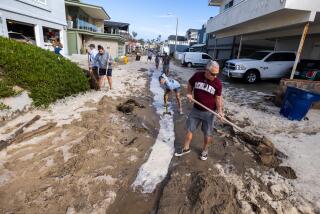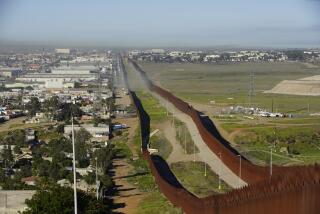Corps of Engineers’ Approval Urged : Work on Ventura Harbor Backed
- Share via
A $6.5-million plan aimed at making Ventura Harbor more navigable received preliminary approval from an Army Corps of Engineers official Wednesday.
Col. Tadahiko Ono, district engineer for the Los Angeles district, recommended that corps officials in San Francisco approve the plan, which calls for a revamping of Ventura Harbor’s channel and entrance by the end of 1992.
If the corps approves the plan, it will then ask Congress for more than $5 million. The Ventura Port District will pay $1,280,000, according to General Manager Richard Parsons.
In what port authorities and corps engineers are calling an effort to alleviate navigational problems caused by shallow waters and high waves at the harbor’s entrance, the plan, as outlined in a $120,000 study, calls for a series of port improvements designed to ease commercial and recreational access to the harbor.
Parsons said the harbor improvements would include a 250-foot spur groin--a structure made of rocks--attached to the North Jetty as a sand trap; a 300-foot dog-leg extension to the existing breakwater that would reduce the violence of ocean waves in the channel; a 650-foot South Beach groin about 1,000 feet down the coast from the South Jetty to prevent sand from the south from entering the channel, and deepening and expanding the existing entrance channel.
Area surfers have expressed concern that the South Beach groin would hamper board surfing in that area, but “analysis has indicated otherwise,” Parsons said. He added that the corps plans to further study the issue. He said the improvements would mean increased use and commercial development of the harbor. “We know the harbor entrance problem has historically discouraged development of this harbor. It doesn’t take a genius to understand why.”
According to the study, the Ventura Harbor entrance channel regularly accumulates large amounts of drifting sediment, requiring yearly dredging that has cost more than $11 million since 1973. Vessels also encounter difficulties trying to navigate the poorly sheltered channel in stormy weather. Because waves often reach heights of more than three feet, boats regularly run aground or capsize, the study states.
The study estimates that commercial fishermen lose about $500,000 a year as a result of the hazardous wave conditions that prevent them from leaving the harbor to fish about 110 days out of the year.
More to Read
Sign up for Essential California
The most important California stories and recommendations in your inbox every morning.
You may occasionally receive promotional content from the Los Angeles Times.













